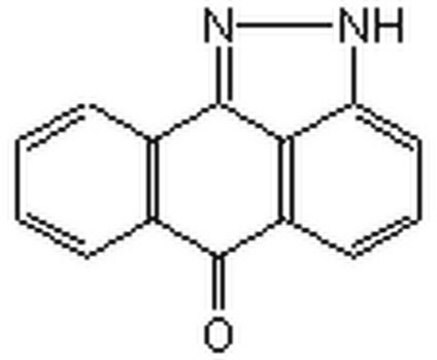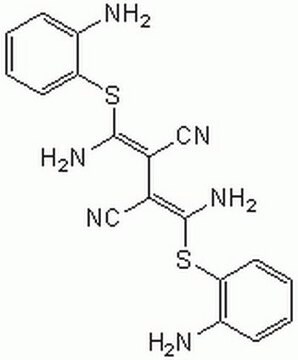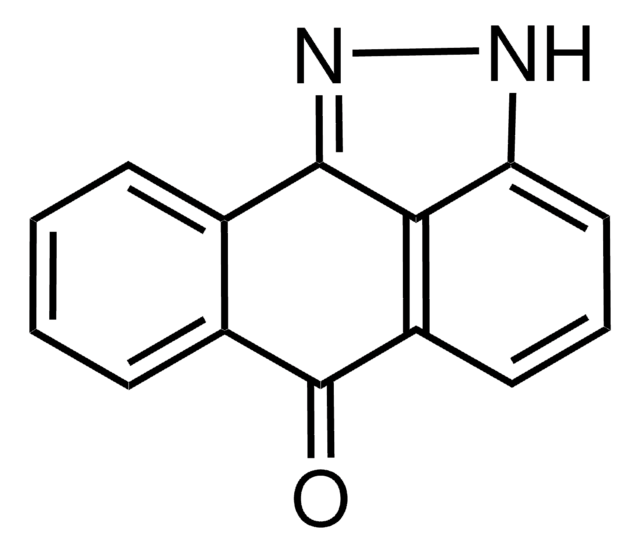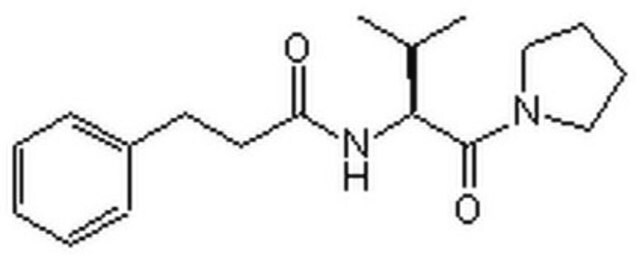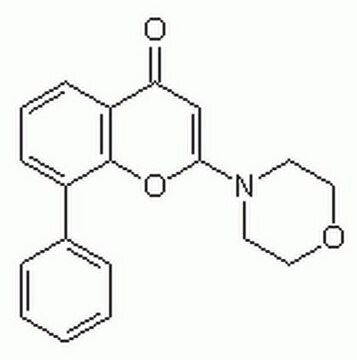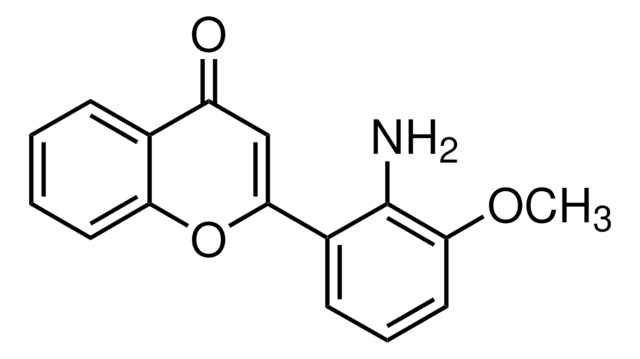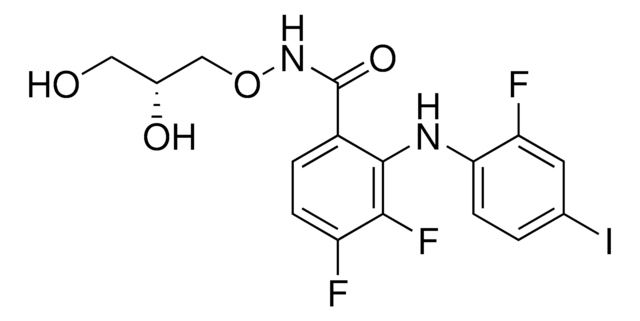559389
SB 203580
≥98% (HPLC), film (Thin), p38 MAP kinase inhibitor, Calbiochem®
Synonym(e):
SB 203580, 4-(4-Fluorphenyl)-2-(4-methylsulfinylphenyl)-5-(4-pyridyl)1H-imidazol, p38 MAP-Kinase-Inhibitor XVI
About This Item
Empfohlene Produkte
product name
SB 203580, SB 203580, CAS 152121-47-6, is a highly specific, potent, cell-permeable, selective, reversible, and ATP-competitive inhibitor of p38 MAP kinase (IC₅₀ = 34 nM in vitro, 600 nM in cells).
Qualitätsniveau
Assay
≥98% (HPLC)
Form
film (Thin)
Hersteller/Markenname
Calbiochem®
Lagerbedingungen
OK to freeze
protect from light
Löslichkeit
DMSO: 30 mg/mL
Versandbedingung
ambient
Lagertemp.
−20°C
InChI
1S/C21H16FN3OS/c1-27(26)18-8-4-16(5-9-18)21-24-19(14-2-6-17(22)7-3-14)20(25-21)15-10-12-23-13-11-15/h2-13H,1H3,(H,24,25)
InChIKey
CDMGBJANTYXAIV-UHFFFAOYSA-N
Allgemeine Beschreibung
Biochem./physiol. Wirkung
Warnhinweis
Sonstige Hinweise
Powell, D.J., et al. 2003. Mol. Cell Biol.23, 7794.
Davies, S.P., et al. 2000. Biochem. J.351, 95.
Iwasaki, S., et al. 1999. J. Biol. Chem.274, 26503.
Gallagher, T.F., et al. 1997. Bioorg. Med. Chem. 5, 49.
LoGrasso, P.V., et al. 1997. Biochem. 36, 10422.
Hazzalin, C.A., et al. 1996. Curr. Biol.6, 1028.
Kramer, R.M., et al. 1996. J. Biol. Chem.271, 27723.
Saklatvala, J., et al. 1996. J. Biol. Chem. 271, 6586.
Cuenda, A., et al. 1995. FEBS Lett.364, 229.
Gallagher, T.F., et al. 1995. Bioorg. Med. Chem. Lett. 5, 1171.
Lee, J.C., et al. 1994. Nature 372, 739.
Rechtliche Hinweise
Signalwort
Warning
H-Sätze
Gefahreneinstufungen
Acute Tox. 4 Oral
Lagerklassenschlüssel
13 - Non Combustible Solids
WGK
WGK 3
Flammpunkt (°F)
Not applicable
Flammpunkt (°C)
Not applicable
Analysenzertifikate (COA)
Suchen Sie nach Analysenzertifikate (COA), indem Sie die Lot-/Chargennummer des Produkts eingeben. Lot- und Chargennummern sind auf dem Produktetikett hinter den Wörtern ‘Lot’ oder ‘Batch’ (Lot oder Charge) zu finden.
Besitzen Sie dieses Produkt bereits?
In der Dokumentenbibliothek finden Sie die Dokumentation zu den Produkten, die Sie kürzlich erworben haben.
Kunden haben sich ebenfalls angesehen
Unser Team von Wissenschaftlern verfügt über Erfahrung in allen Forschungsbereichen einschließlich Life Science, Materialwissenschaften, chemischer Synthese, Chromatographie, Analytik und vielen mehr..
Setzen Sie sich mit dem technischen Dienst in Verbindung.
